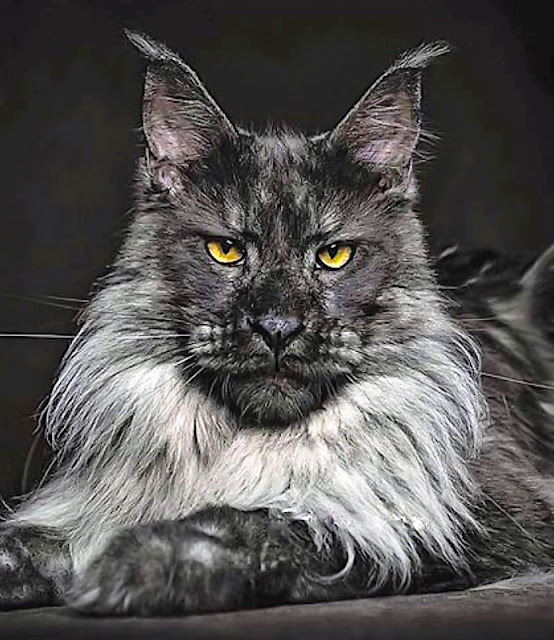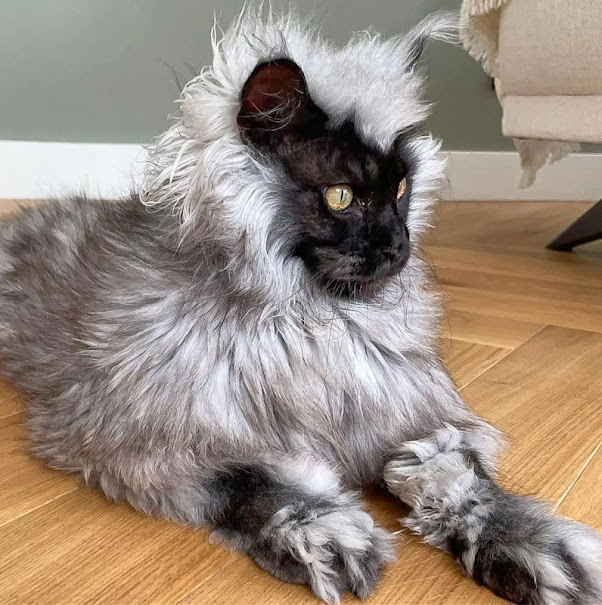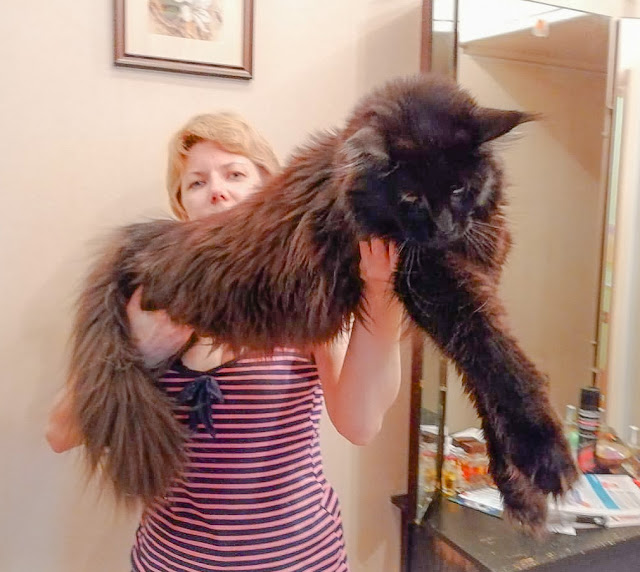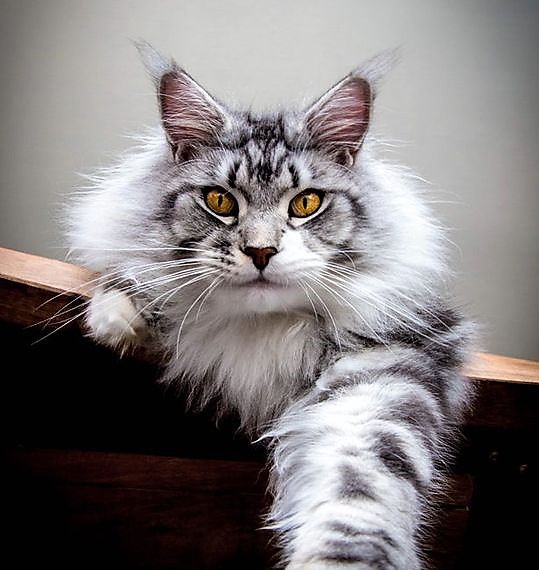Carbon footprint (CO2e) of a large Maine Coon cat
Firstly, I would like to mention two points. I have referred to 'large' Maine Coon cats because these are typically seen on the internet and they are not untypical but not all Maine Coon cats are the large animals that we see on the internet. They are the largest domestic cat breed but not always exceptionally larger than the standard cat. But the large Maine Coons are going to be about twice the size of your standard domestic cat.
 |
| By MikeB. |
And secondly, carbon footprint is referred to as 'CO2e' which means carbon dioxide equivalent. This means looking at all the gases emitted which contribute to global warming including CO2 (carbon dioxide) in producing all the products needed to support a Maine Coon cat or dog. It is an easy way to refer to the impact that creating and supporting a particular product or animal has on climate change.
Infographic
The infographic on this page was created by me based upon information on the Zero Smart website which I refer to within the infographic. I estimated the carbon footprint of Maine Coon cats by a direct comparison with the carbon footprint of a medium-sized dog and then downgraded that slightly. The large Maine Coon cats are a similar size to a medium-sized dog but perhaps on average slightly smaller.
Estimates
There has to be some estimates when assessing this figure. The figure in the infographic is not going to be highly precise but simply a rough estimate. It equates by the way to about 12 hours driven in a car in terms of CO2 equivalent emissions.
Pet food
The kind of industries which contribute to climate change and which support the Maine Coon cats are those that produce foods i.e. pet food. One study calculated that meat eating by dogs and cats create the equivalent of 64 million tonnes of carbon dioxide annually. This is about the same negative impact on climate change as a year's worth of driving 13.6 million cars.
Reducing carbon footprint
You can reduce your Maine Coon cat's carbon footprint by reducing the amount of food they eat. This is not going to be highly practical because it is very rare to see an obese Maine Coon cat on the internet. They are quite a rangy cat and as far as I can tell they don't normally overeat or are overfed. But if your Maine Coon cat is obese then cutting down on food intake will cut down on carbon footprint.
A controversial suggestion would be to feed at least partly plant-based dry cat foods. These are available today and they are perfectly safe in my view because they contain added nutrients which means that the food exactly replicates a meat-based dry cat food. There is no difference in my view. This would help the climate because a big contributor to climate change is the production of beef and other livestock although there is not a lot of beef and real meat in cat food!
Carbon offset
Perhaps the only really practical way most people to deal with the carbon footprint of their Maine Coon cat would be to offset the carbon footprint by doing something which improves the environment and suppresses climate change such as planting trees.
Plastic toys
You can also stop buying plastic toys because the production of plastic is damaging to the environment. You can buy toys which are sustainable and environmentally friendly but I think this is quite a minor contribution. I would suggest the best method is offsetting your cat's carbon footprint as mentioned.
Size of Maine Coon
I've estimated that the Maine Coon has about 2x the carbon footprint of the standard domestic cat.
Zero Smart
The Zero Smart website tells me that "you can offset your pet's emissions entirely for £12 per year for a dog". You might want to dip into that website which you can do by clicking on this link to see whether that interest you.
Some more detail on 'carbon equivalent footprint' from Chat GPT
Carbon equivalent footprint is a measure used to assess the overall environmental impact of an entity, such as an individual, organization, or product, in terms of greenhouse gas emissions. It takes into account not only carbon dioxide (CO2) emissions but also the emissions of other greenhouse gases, such as methane (CH4) and nitrous oxide (N2O), which contribute to global warming.Greenhouse gases have different global warming potentials (GWPs) based on their ability to trap heat in the Earth's atmosphere over a specific time period compared to CO2. For instance, methane has a higher GWP than CO2 but a shorter atmospheric lifetime, meaning it has a more potent warming effect in the short term. Nitrous oxide has an even higher GWP than methane but persists in the atmosphere for a longer time.
To calculate the carbon equivalent footprint, the emissions of different greenhouse gases are converted into an equivalent amount of CO2 emissions based on their respective GWPs. This allows for a standardized measurement that represents the total climate impact in terms of CO2 emissions alone. The process of calculating the carbon equivalent footprint involves multiplying the emissions of each greenhouse gas by its GWP and summing up the results.
For example, if an entity emits 10 tons of CO2, 2 tons of methane (with a GWP of 25), and 0.5 tons of nitrous oxide (with a GWP of 298), the carbon equivalent footprint would be calculated as follows:
CO2 equivalent emissions = 10 tons CO2 + (2 tons CH4 * 25) + (0.5 tons N2O * 298) = 10 tons CO2 + 50 tons CO2 + 149 tons CO2 = 209 tons CO2 equivalent
So, in this example, the carbon equivalent footprint would be 209 tons of CO2 equivalent.
By considering all greenhouse gases and converting their emissions into a common unit of CO2 equivalent, the carbon equivalent footprint provides a more comprehensive assessment of an entity's impact on climate change. It helps in identifying and comparing the relative contributions of different greenhouse gases and supports efforts to reduce emissions across all sectors to mitigate climate change.










Comments
Post a Comment
Please share your Maine Coon experiences.